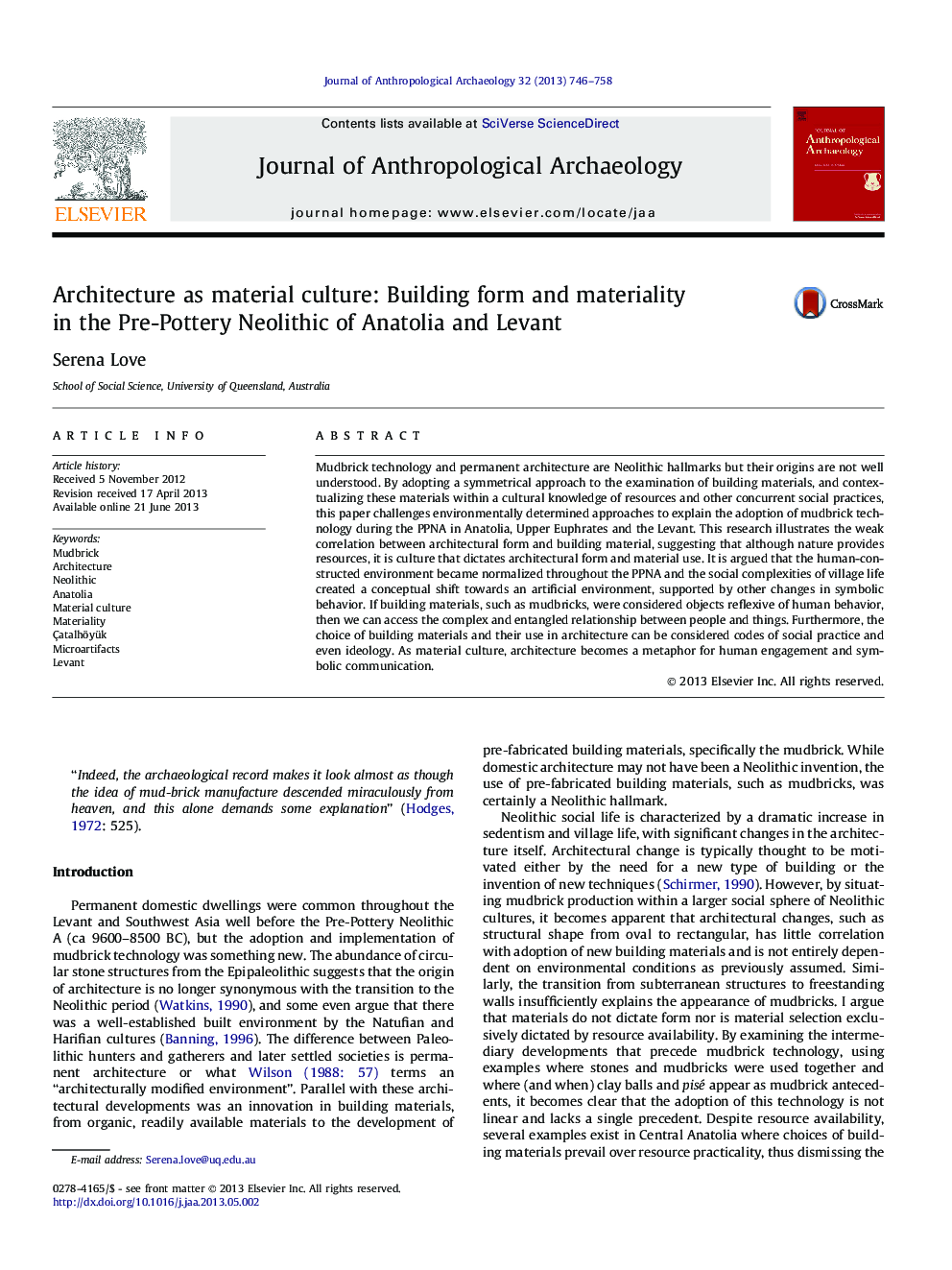| Article ID | Journal | Published Year | Pages | File Type |
|---|---|---|---|---|
| 10498724 | Journal of Anthropological Archaeology | 2013 | 13 Pages |
Abstract
Mudbrick technology and permanent architecture are Neolithic hallmarks but their origins are not well understood. By adopting a symmetrical approach to the examination of building materials, and contextualizing these materials within a cultural knowledge of resources and other concurrent social practices, this paper challenges environmentally determined approaches to explain the adoption of mudbrick technology during the PPNA in Anatolia, Upper Euphrates and the Levant. This research illustrates the weak correlation between architectural form and building material, suggesting that although nature provides resources, it is culture that dictates architectural form and material use. It is argued that the human-constructed environment became normalized throughout the PPNA and the social complexities of village life created a conceptual shift towards an artificial environment, supported by other changes in symbolic behavior. If building materials, such as mudbricks, were considered objects reflexive of human behavior, then we can access the complex and entangled relationship between people and things. Furthermore, the choice of building materials and their use in architecture can be considered codes of social practice and even ideology. As material culture, architecture becomes a metaphor for human engagement and symbolic communication.
Related Topics
Social Sciences and Humanities
Arts and Humanities
History
Authors
Serena Love,
